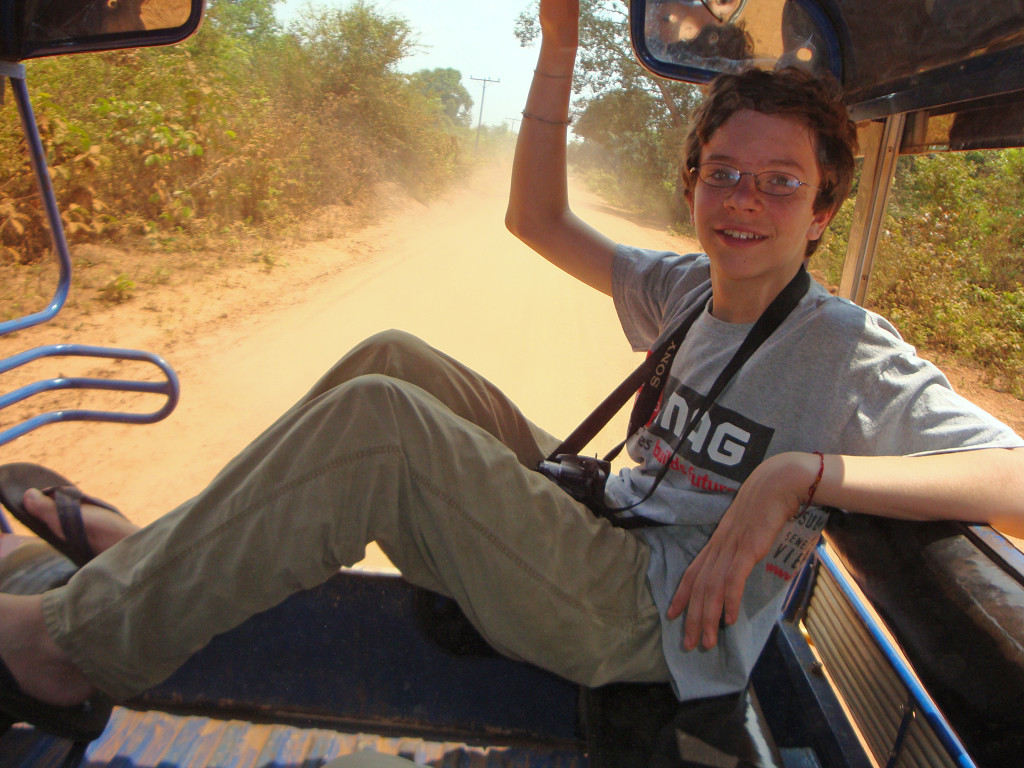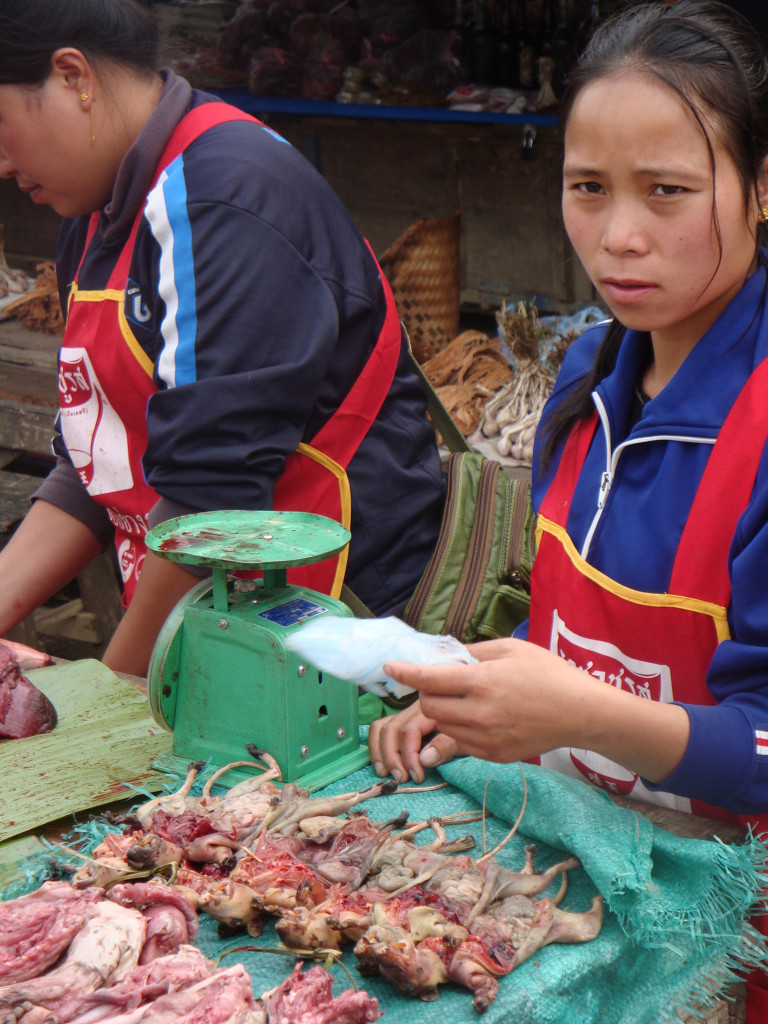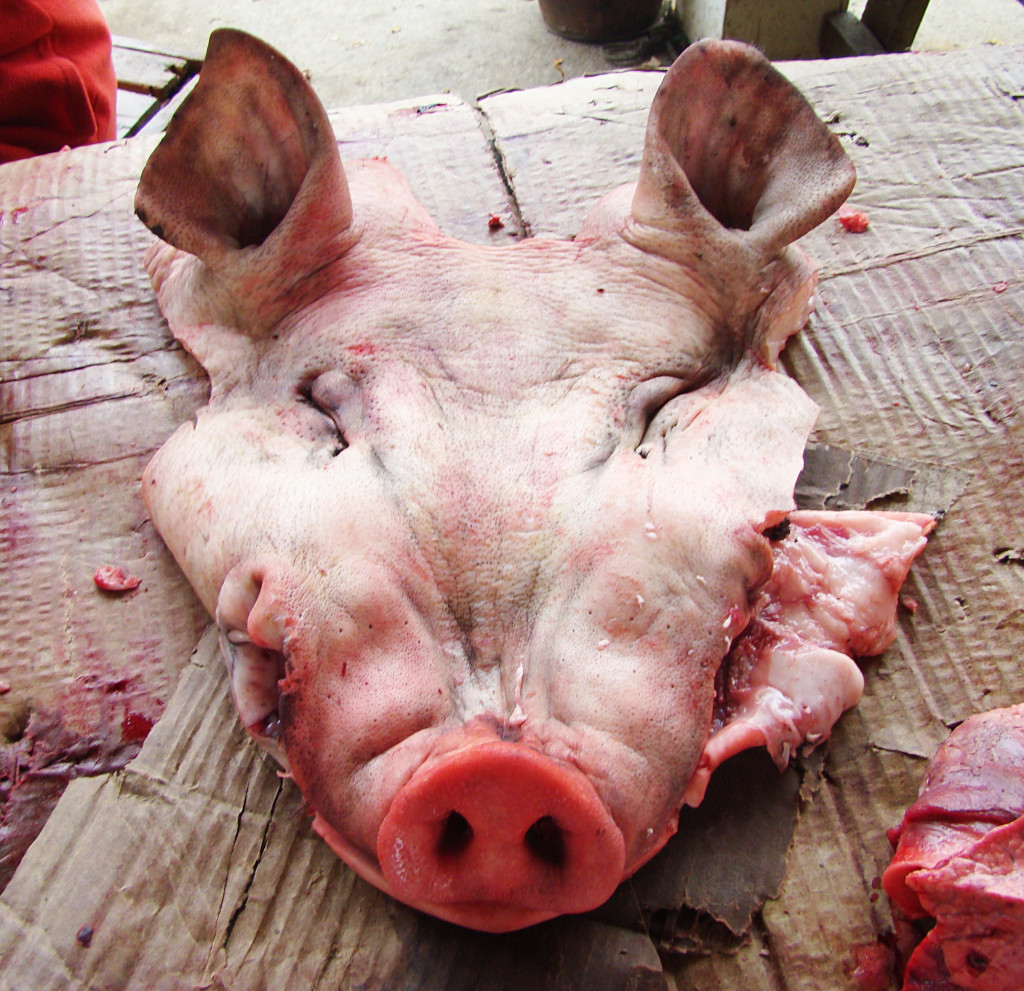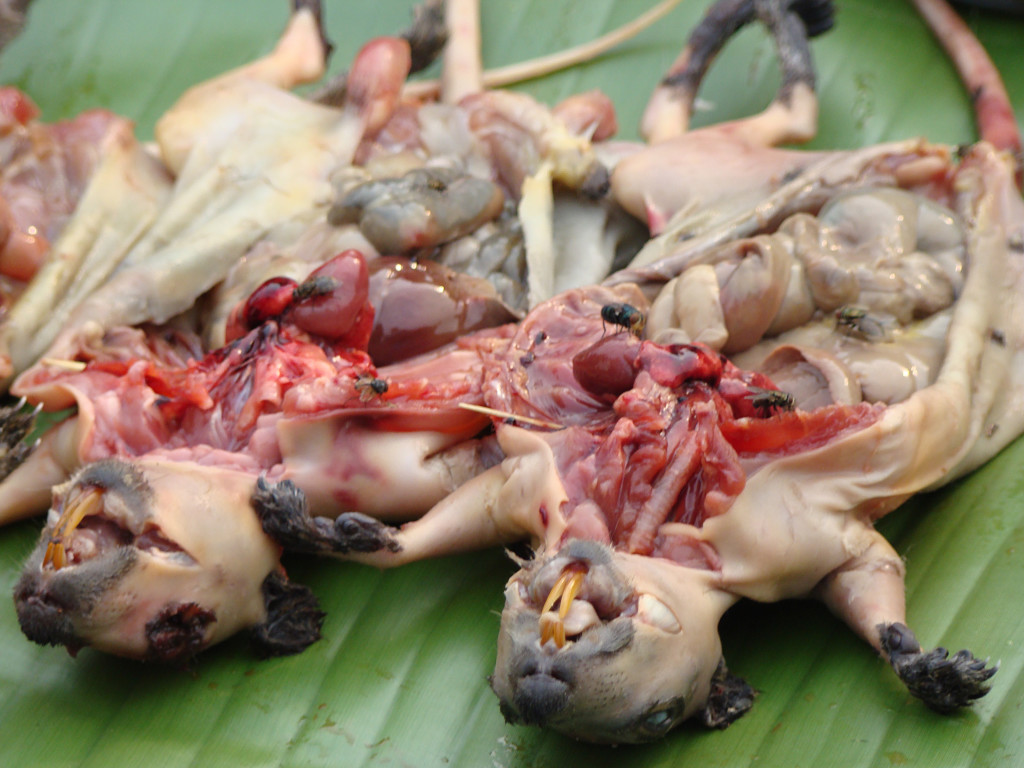The Meat Market (Warning: Explicit Animal Parts Ahead)
Writing these stories gets increasingly difficult. The more I travel, the more I think that what I see overseas is normal. A simple walk down the road will reveal people burning plastic garbage, little kids rolling rusty metal hoops down the slope, and busy looms under every thatched-roof hut; it all seems entirely normal, just an everyday walk. But if someone who had not traveled saw this, they might have freaked out, taken hundreds of pictures, and written pages of articles on this one walk. So I’ve been trying to see Lao life through the eyes of a fresh visitor. What would be amazing? One example: every slightly larger town has a market, and in every market are the counters where local women are selling fresh meat, waving sticks with plastic bags tied at the end to shoo away the ever-present swarms of flies.
Entering the meat section, the smell of raw meat and flies floats around us like a heavy fog. The rows of stands seem to go on until they dip below the horizon. All along these stalls, piled up like mountains, is every type of fresh, dripping meat that you could ever imagine; rats, bats, cats, chicken fats, and little scraps. Everything is posed in a way to make the pieces look a little more attractive. They make the prepared dogs look like they are smiling by placing their heads towards the buyers, and then (and I don’t know how they do this), they make the bald-headed dog grimace, exposing it’s teeth and then curling the lips up. Next to the dog heads is a stack of bald forelegs, still with their paws. They burn the hair off, apparently. Their red roasts and internal organs are neatly piled to one side. Needless to say, it doesn’t look too appetizing to this westerner.
The pigs faces look like they’re the happiest creatures alive. Really – you can buy a pig face in the market! They do this by skinning the entire pig face – chin, cheeks, ears, eyebrows and all – and then shape them to look happy. You can buy every other part of a pig as well – and I mean every part – kidneys, intestines, livers, hooves, tails. And some parts I still don’t know what they are. They’re all piled tidily on the plain wood counter. I’ve never seen so many different shades of red. You can even buy a pie-shaped slice of coagulated blood.
Occasionally, the butchers come up to you and offer some smelly, gray, shriveled, barbecued rats. These rats are “crucified” on thin bamboo sticks and then smoked over a fire. Their bones look to be jabbing through their hides and any meat seems to have shrunk away. Although we have been offered these many times (they seem to be especially treasured as bus snacks by the locals), when the hordes of flies jump off the rodents, leaving god-knows-what all over the “meat,” our stomachs twist and we decide it’s better to wait for fresh ones. Which we will usually try to avoid as well. Rat meat is really strong tasting, somewhere between dog and bat.
There are field rats cut open to show off how fresh they are, live frogs with their feet tied together, hunks of dried water buffalo skin, and rows upon rows of strange brown spices. We’ve seen piles of small black bats, fish sliced open with their hearts still pumping, and huge water buffalo legs. Sometimes there are trays of white, thumb-sized grubs or black beetles with their wings pulled off.
To someone who had never traveled to the out-back of Asia, this would be something amazing, but to me, this is now a familiar market. So when I sit down and write these stories, I have to put myself in someone else’s shoes. I have to imagine it as if I had never seen kids chewing chunks of barbecued goodness-knows-what-on-a-stick. It also makes me wonder what in our “normal” world here in Eugene might look weird to some kid from a small Ta-Oi village in Laos or Vietnam





